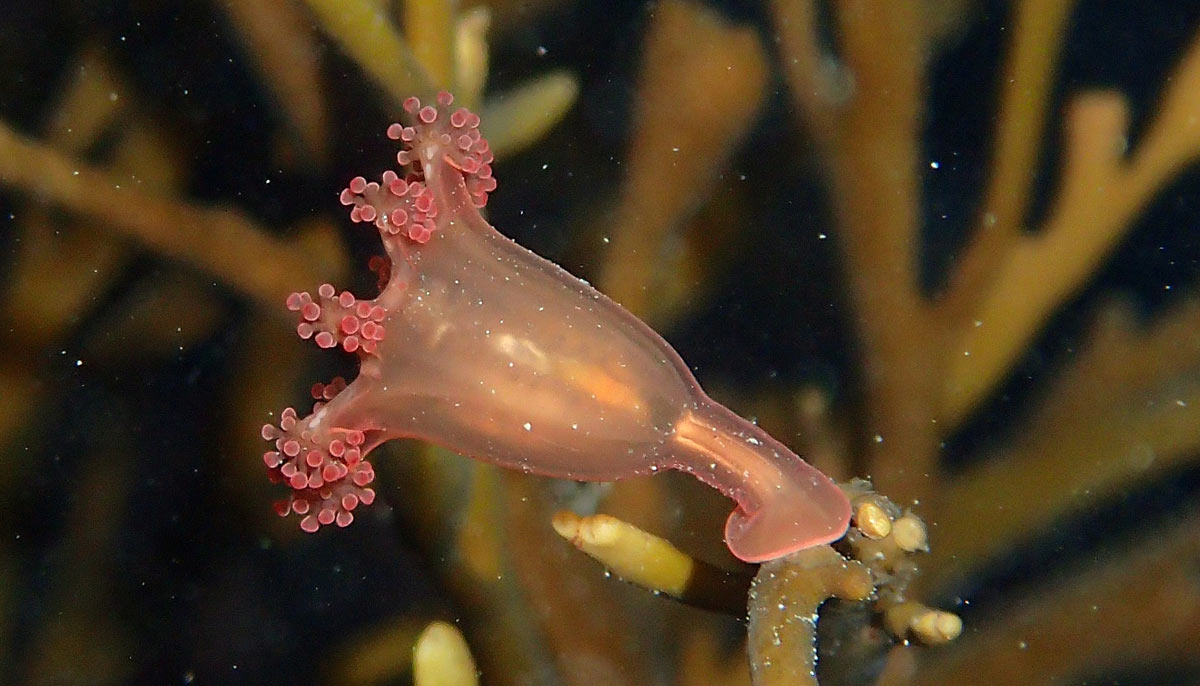CoCoast
Citizen scientists further our knowledge of coastal seas
Published on: 27 September 2018
Scientists and volunteers join forces to understand how the UK coastline is changing in the face of climate change and species invasion.
Changing sea temperatures, more severe storms and ‘hitchhiking’ invasive species are changing the UK’s coastline.
Now, after three years, a unique project involving thousands of volunteers and scientists from across the UK has set an important baseline of data to help us better understand how this ecosystem is changing.
‘Capturing our Coast’ is the largest ever citizen science project of its kind, set up to investigate a number of threats to marine life, such as the impact of climate change and non-native organisms on coastal habitats across the UK.
Running over three years, the project has recruited more than 2,500 volunteers and involved hundreds more, surveying 1,800 sites and collecting 240,000 points of data.

Powerful collaboration
Funded by the National Lottery, 240,000 data points have been collected across 2500 surveys using 20,000 quadrats, over three years – a task which could not have been achieved by scientists alone.
Key findings include:
- 162 invasive species records confirmed on the UK’s coast including the Japanese Wireweed; the Portuguese and Pacific oysters; the Australian barnacle, the orange-tipped sea squirt and Wakame seaweed
- The first ever sighting of a stalked jellyfish at Boulmer and the first record of a toothed crab at Filey Brigg
Presenting the initial findings today, project lead Dr Jane Delany, a Senior Lecturer in Marine Ecology at Newcastle University, said the project had demonstrated “how powerful a collaboration between scientists and members of the public can be.”
“Capturing our Coast is unique because it is the largest marine experimental project of its kind to date, where members of the public were supported, not only to undertake surveys of species distributions, but also to participate in testing of scientific hypotheses.
“Along with our volunteers, we have collectively demonstrated how powerful a collaboration between scientists and members of the public can be. Together we have gathered robust and relevant data, and worked towards a shared goal of healthier and more biodiverse seas.”
Setting a baseline
Changes to marine life because of factors such as increased sea temperatures or more severe storms, may make our shores inhospitable to certain species that we take for granted. The data collected by the Capturing our Coast volunteers suggested that several of our seaweed and mollusc species are already showing changes in abundance, or are moving to different areas around the UK to escape extreme conditions.
By studying a number of keystone, or indicator, species and how they are changing, we are better able to understand what is happening more widely across our seas.
“The UK coastline is an ideal place to study these effects, because warmer waters from the south meet colder, subarctic waters in the seas around Britain,” explains Dr Delany.
“This means many shore species reach the boundary of their geographical ranges here so shifts of range can therefore be picked up for both warm and cold loving species.
“Invasive species are one of the top threats to UK coastal biodiversity. Globalisation of maritime activities has resulted in invasive coastal species arriving in UK waters through shipping traffic, unintentional escapes of species deliberately introduced for aquaculture, and introductions through ‘hitchhiking’ with imported species.
“And we had some really exciting finds. Here in the North East we spotted orange-tipped sea squirts which are originally from South Africa and New Zealand, but were found thriving in Cresswell.
“And we are seeing successful populations of the Australian barnacle, likely to have come across on ship hulls.
“The effects of individual species can be complex, with both positive and negative potential impacts, and research such as this will help us to build a more accurate picture of how biodiversity is changing.”
Drew Bennellick, head of landscape and natural heritage at the Heritage Lottery Fun, added:
“Capturing Our Coast has been brilliant at engaging people with nature through citizen science, as well as making a hugely important contribution to our understanding of the UK’s changing coastline.
“The National Lottery is now the biggest funder of nature in the UK and it’s important to remember that this valuable contribution to our understanding of our changing natural environment is only possible thanks to money provided by the people who buy tickets.”
Changing the face of how science is done
The types of questions that Capturing our Coast wanted to address required scientific data from across all of our coastlines. This is incredibly difficult for scientists to gather alone. The unique partnership between members of the public and professional scientists allowed these questions to be tackled and demonstrates that citizen scientists can contribute meaningfully to hands-on science with robust data. This has powerful implications for future collaborations and a shift in how citizen science data is viewed. The Capturing our Coast teams will use their learnings to advise other organisations on enabling communities to contribute to science on a variety of environmental issues.
The project was a national partnership, led by Newcastle University, with the Scottish Association for Marine Science, Bangor University, Marine Conservation Society, Marine Biological Association Plymouth Portsmouth University, Hull University, and national support from Earthwatch. Additional support was provided by Heritage Coast Partnership and Cefas.



